Do you want to grow San Marzano tomatoes in your garden, but are confused about whether they are determinate or indeterminate varieties? Look no further – this blog post will answer that question and provide useful tips so that you can successfully plant and enjoy San Marzano Tomatoes in your home garden. Here, we’ll look into the differences between these two types of tomatoes as well as explain how you can identify a determinate or indeterminate tomato when considering them for purchase at the store. After reading this guide, handling your tomato growing projects with confidence should be simple!
What Are San Marzano Tomatoes?
If you’re a fan of Italian cuisine, you may have heard of San Marzano tomatoes.

Named for the small town of San Marzano sul Sarno in Italy, this variety of tomato is considered by many to be among the most flavorful tomatoes available.
Origin and history of the ‘San Marzano’
The San Marzano tomato is not just any ordinary tomato – it’s one of the most famous and beloved varieties around the world. This tomato originated from the town of San Marzano sul Sarno, near Mount Vesuvius in Southern Italy. [1] Its story begins centuries ago, when it was originally brought to Italy by the Spanish. The San Marzano was favored by farmers in the region for its thicker walls, sweetness, and low acidity. The first seeds of the tomato were planted in the fertile soil near the base of the mountain, at the time of Augustinian monks. Over the centuries, this tomato has become renowned for its versatility in cooking and making sauces.
‘‘San Marzano’ Tomato Properties and Flavour
Sought after by chefs and home cooks alike, the San Marzano tomato has long been revered for its unique properties and exquisite flavour. This plump, elongated tomato hails from the Campania region of Italy, where the fertile soil and Mediterranean climate produce the perfect conditions for its cultivation. The San Marzano boasts a distinctively thick and meaty flesh, with a minimal amount of seeds and water content. [2] This makes it ideal for sauces and pastes, as it produces a rich and intense flavour that beautifully complements a range of dishes. Its tangy sweetness is balanced by a subtle acidity, lending the San Marzano a complex and nuanced taste that is as delicious as it is versatile. Whether thinly sliced onto a pizza, simmered into a marinara sauce, or roasted and served alongside fresh mozzarella, this tomato is sure to elevate any recipe it touches.
Types of San Marzano Tomatoes
In addition to the classic San Marzano tomato, there are also San Marzano 2 and Kiros tomatoes. The San Marzano 2 is a newer variety that boasts a slightly sweeter taste than the original, while Kiros tomatoes are a type of San Marzano bred in Greece. Both of these varieties offer unique flavors and characteristics, allowing chefs and home cooks alike to experiment with new recipes and techniques. Whether you’re making a classic tomato sauce or trying out a new dish, San Marzano tomatoes are a must-try ingredient for any culinary enthusiast.
What is the Difference Between San Marzano Tomatoes and Other Tomatoes?
What makes “San Marzano” tomatoes different from other tomato varieties? First, San Marzano tomatoes are longer and more pointed than other tomatoes, with a thicker flesh and fewer seeds. [3] They’re also known for their sweetness and low acidity, which makes them ideal for tomato-based sauces. Another key difference is the location where they are grown – true San Marzano tomatoes are only grown in the volcanic soil of the Sarno River valley in Italy. As a result, they have a unique flavor and texture that can’t be replicated by other tomatoes. While they may be pricier than other tomato varieties, their flavor and quality make them a worthwhile splurge for any tomato lover.
How to Grow San Marzano Tomatoes From Seed
If you’re looking to try your hand at growing San Marzano tomatoes, here is a step-by-step guide on how to do so:
- Start by purchasing organic seeds from a reputable source and soaking them in warm water for 24 hours before sowing.
- Fill seed trays or individual pots with well-draining soil that is rich in nutrients and organic matter.
- Sow the seeds about ½ inch (1 cm) deep and lightly cover with soil.
Place the seed trays or pots in an area with bright, indirect sunlight and keep the soil damp but not saturated. - Once the plants have grown several sets of true leaves, transplant them into larger pots or prepare soil beds for outdoor planting.
- Keep an eye on the plants throughout the season and water if needed – San Marzano tomatoes prefer moist but not soggy soils.
- Harvest when the fruits have reached their desired size and enjoy your homegrown San Marzanos! With a little patience and attention, growing San Marzano tomatoes can be a rewarding experience that yields delicious results.
How to Grow San Marzano Tomatoes From Purchased Plants - If starting from seed is too time-consuming, you can also purchase San Marzano tomato plants that are ready to be planted in the garden. Here’s what to do:
- Start by finding a reputable source for your plants, such as a local nursery or online retailer.
- Once you have received your plants, check their roots and leaves for any signs of disease or pests before planting.
- Prepare soil beds with organic compost and plant the tomatoes 18-24 inches (45-60 cm) apart – allow enough room for them to spread out and reach their full potential.
- Water regularly throughout the season – San Marzanos prefer moist but not soggy soils – and add mulch if needed to retain moisture and protect against weeds.
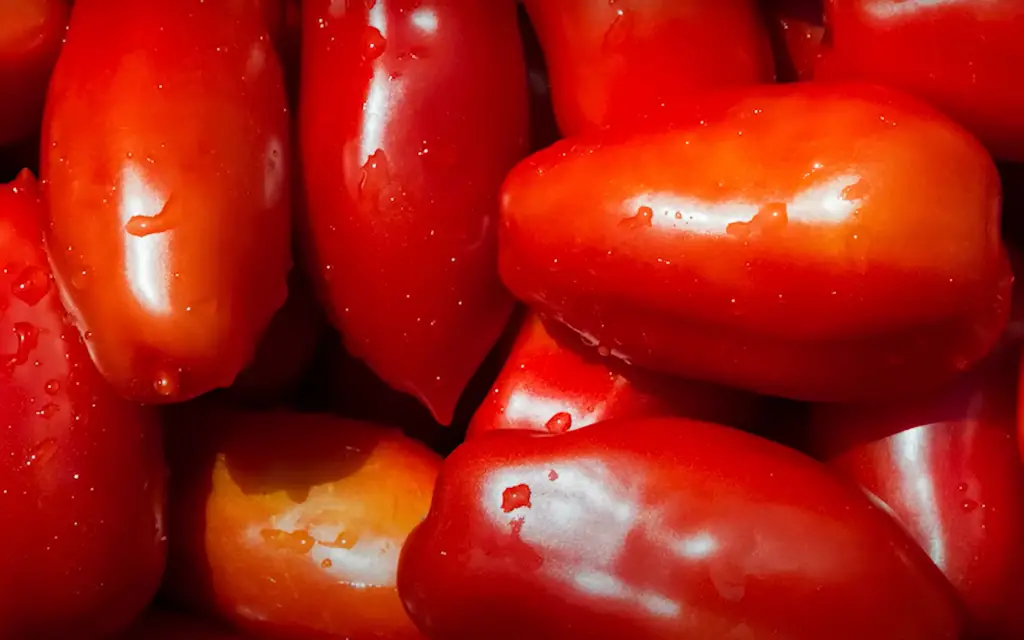
Harvest when the fruits have reached their desired size and enjoy your homegrown San Marzanos!
How to Fertilize San Marzano Tomatoes
Fertilization can make a huge difference in the health and productivity of your San Marzano tomatoes. When it comes to choosing the right fertilizer, it’s important to go for a balanced blend that contains essential macro and micronutrients such as nitrogen, phosphorus, and potassium. [4] One of the best ways to fertilize San Marzano tomatoes is to apply fertilizer two to three weeks after transplanting the seedlings into the ground. This will allow the plants to establish healthy root systems that will be able to absorb nutrients more efficiently. It’s important to apply the fertilizer around the base of the plants and not directly onto the leaves to avoid burning them. With the right amount of fertilizer, your San Marzano tomatoes will thrive and provide you with delicious, juicy fruits!
How to Harvest San Marzano Tomatoes
For those gardeners who are looking forward to harvesting San Marzano tomatoes, the process may seem daunting at first. But with a little bit of knowledge and preparation, the task can be a rewarding and fulfilling one. First, it’s important to know that San Marzano tomatoes should be harvested when fully ripe, which means they should be bright red and plump. To avoid damaging the fruit, use a pair of scissors or a sharp knife to cut the stem. You’ll want to avoid pulling or twisting the fruit as this can cause it to crack or become bruised. Once you’ve harvested your San Marzano tomatoes, they’re ready to be used in a variety of delicious recipes, from pasta sauces to stews and more
How to Store San Marzano Tomatoes
When it comes to storing San Marzano tomatoes, there are a few key things to keep in mind. First, these tomatoes are delicate and can bruise easily, so you’ll want to handle them with care. Second, they need to be stored in a cool, dry place, away from direct sunlight. This will help to prolong their freshness and prevent them from spoiling too quickly. Finally, it’s important to make sure that the tomatoes are properly cleaned and dry before storing them, as moisture can lead to mold growth. By following these simple tips, you can ensure that your San Marzano tomatoes stay fresh and delicious for as long as possible.
Determinate vs Indeterminate Tomatoes
If you are looking to branch out in the world of tomato gardening, it’s important to consider the difference between determinate and indeterminate varieties.
On the other hand, indeterminate tomatoes can grow and sprawl upward, continuing to produce fruits throughout the growing season. [6] Understanding these distinctions is key when selecting seeds or plants, as it will have an impact on your gardening process and ultimately your yields. Both types of tomatoes have their pros and cons, and deciding which is right for you will depend on your specific goals and growing environment.Differences Between the Growth and Sizes
Determinate tomatoes tend to be more compact and bushier, while indeterminate tomatoes can climb and grow quite tall. This is because determinate tomatoes have a pre-set growth limit, while indeterminate tomatoes will keep growing and producing fruit until the end of the season. The size of the tomatoes also differs between the two types. Determinate tomatoes tend to produce tomatoes that are all around the same size, while indeterminate tomatoes can produce a variety of sizes on the same plant. Knowing the differences between determinate and indeterminate tomatoes can help guide your gardening choices and ensure a bountiful and delicious harvest.
Differences in When They Set Fruit
Another notable difference between determinate and indeterminate tomatoes is the timing of when they set fruit. Determinate tomatoes typically produce their fruits in one large crop, while indeterminate tomatoes can produce multiple crops throughout the season – this is why indeterminate varieties are often referred to as “endless” or “ever-bearing”.
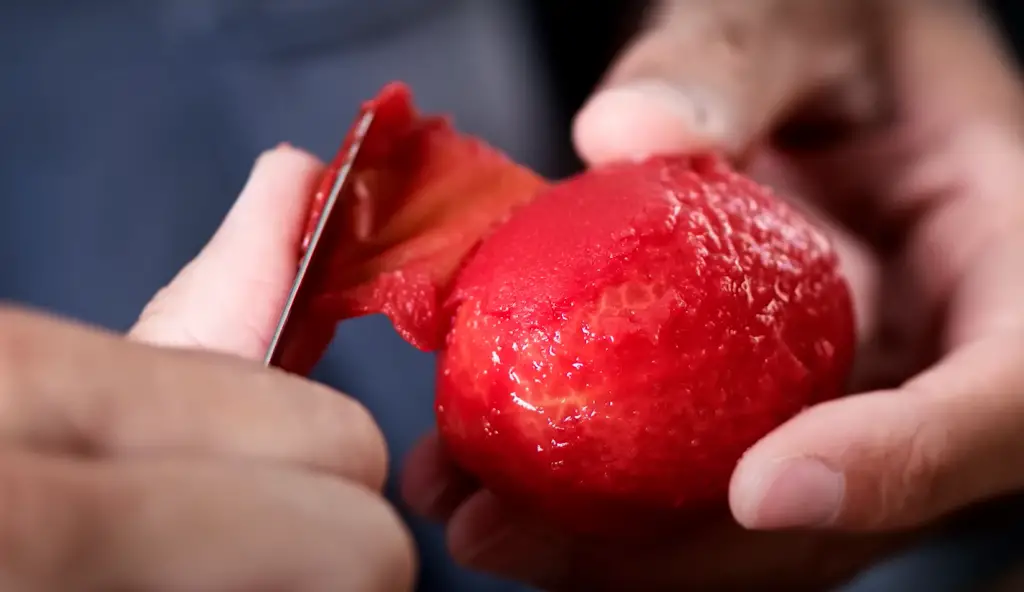
As a result, if you want continuous harvests of fresh tomatoes throughout the growing season, then an indeterminate variety may be your best option.
Which Are Best – Determinate or Indeterminate Tomatoes?
When it comes to deciding between determinate and indeterminate tomatoes, it’s important to consider your gardening goals and conditions. Determinate tomatoes are great for gardeners who want an early and predictable harvest, as these types typically produce their entire crop over a short period of time. Indeterminate tomatoes, on the other hand, will keep producing fruit throughout the season, but require more maintenance and support due to their vining growth habit. Ultimately, the best choice for you will depend on your personal preferences and gardening circumstances, but either way, you can enjoy delicious tomatoes straight from your own backyard.
Are San Marzano Tomatoes Determinate or Indeterminate?
San Marzano tomatoes are typically classified as indeterminate varieties. [7] This means that they will continue to grow and produce fruit for the entirety of the growing season, making them a great choice for gardeners who want a continuous harvest of delicious tomatoes.
With their rich flavor and juicy texture, San Marzano tomatoes make an excellent addition to your backyard garden!FAQ
What is the Difference Between Determinate and Indeterminate Tomatoes in San Marzano?
The main difference between determinate and indeterminate tomatoes in San Marzano is the growth habit and fruit production. Determinate tomatoes are bushier and produce their fruits in one large crop, while indeterminate varieties can sprawl and produce multiple crops throughout the growing season.
Should I Prune a San Marzano Tomato Plant?
Pruning a San Marzano tomato plant is not necessary, but it can help to promote healthy growth and increase yields. Pruning involves removing any dead or diseased branches, as well as any side shoots that form on the main vine. This will help to encourage the formation of more flowers and fruits while also improving air circulation within the plant.
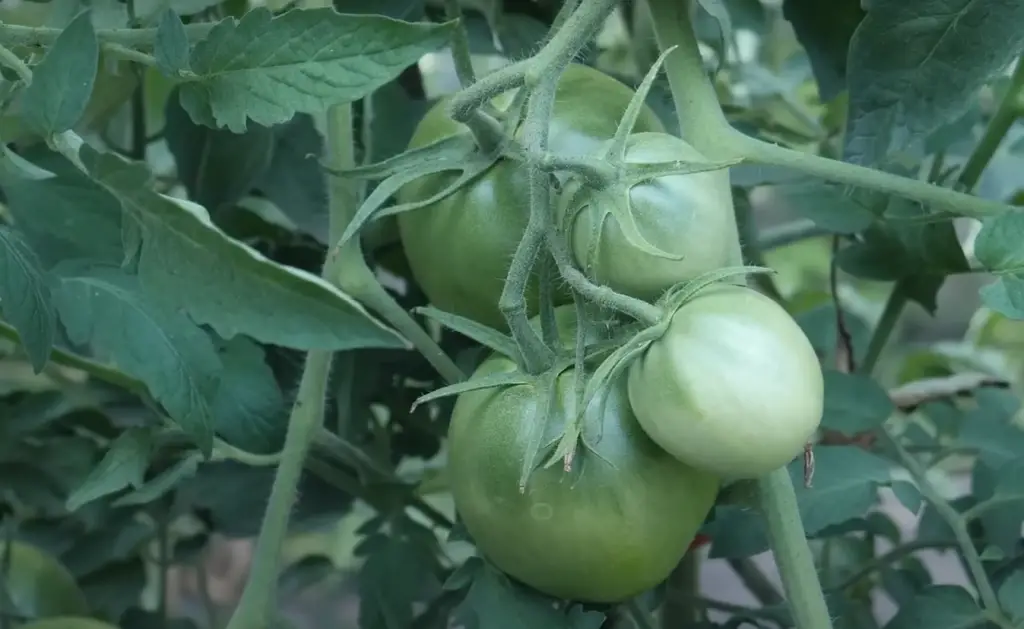
It’s important to use sharp pruning shears and handle the branches gently, as San Marzano tomatoes can bruise easily. With proper care and attention, you can ensure that your San Marzano tomatoes will be a delicious addition to your garden!
How Do I Know if My Tomato is Determinate or Indeterminate?
When it comes to growing tomatoes, it is important to know the difference between determinate and indeterminate tomato plants. Determinate plants are often referred to as “bush tomatoes” and generally have a more compact growth habit, reaching a certain height and producing a set number of fruit before stopping. Meanwhile, indeterminate plants continue to grow and produce fruit throughout the season, often requiring staking or trellising to keep them upright. To determine which type of tomato plant you have, you can look at the tag or label when you purchase it, or you can do a quick search online for the variety you are growing. A good way of identifying these different types of tomatoes is by looking at their leaf structure: determinants have evenly spaced leaves along their stems, while indeterminates often appear much more sprawling and vine-like.
Can Cherry Tomatoes Be Determinate?
Yes, cherry tomatoes can be determinate. Determinate types of cherry tomatoes are usually smaller and more compact than their indeterminate counterparts.
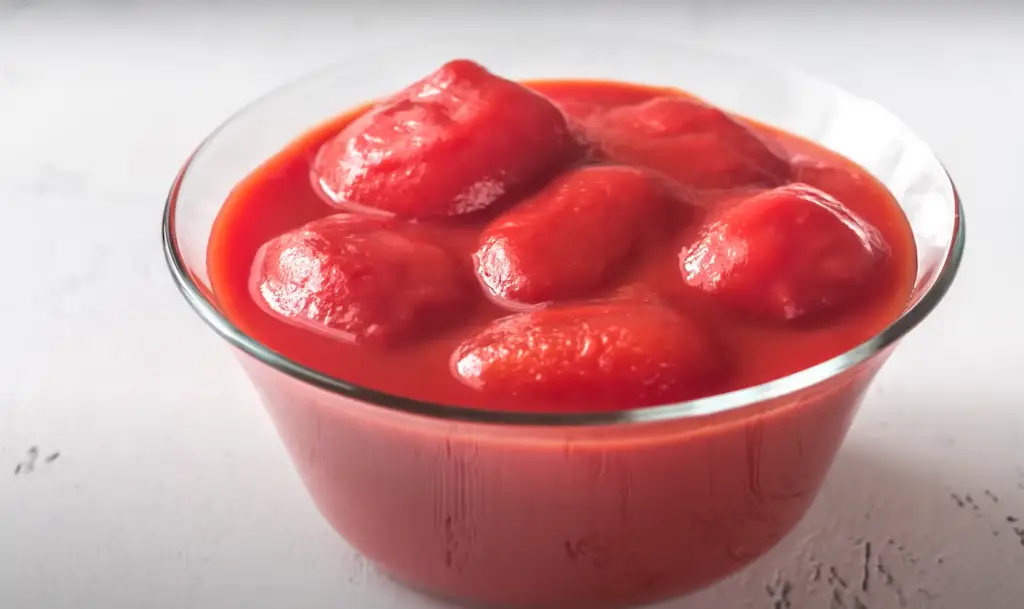
They will grow to a certain height and then stop producing fruit, making them ideal for growing in small spaces or containers where they can be easily contained. Popular varieties of determinate cherry tomatoes include Sweet 100, Tiny Tim, and Red Robin.
How Many Times Will Determinate Tomatoes Produce?
Determinate tomatoes are usually capable of producing fruit two or three times during the season, depending on the variety and environmental conditions. After their initial fruiting period, determinate tomatoes will often produce a smaller second harvest but will not continue to grow in size like an indeterminate plant would. As such, they require less maintenance and are ideal for novice gardeners or those who are short on space.
Useful Video: The Untold Truth Of San Marzano Tomatoes
Conclusions
In conclusion, San Marzano Tomatoes can be a great addition to any garden especially if you’re looking for delicious tomatoes that are consistent in size and ripening. Figuring out which type of San Marzano Tomato to purchase, however, can be tricky. Hopefully this blog post has provided valuable information that can help you identify the right type of San Marzano Tomato for your needs. With a bit of knowledge and patience, you’ll be harvesting your own delicious tomatoes in no time! Don’t forget to bear in mind the reason why you’re choosing a determinate or indeterminate variety – if your priority is dependable yields with little maintenance needed then it’s worth considering determinate varieties over indeterminate ones. With all this said, we wish you the best of luck on growing delicious San Marzano Tomatoes and hope they provide lots of flavorful occasions over the current ‘harvest season’.
References:
- https://www.cento.com/articles/2018/san-marzano-tomatoes.php#:~:text=San%20Marzano%20tomatoes%20get%20their,Campania%20region%20of%20southern%20Italy.
- https://www.specialtyproduce.com/produce/San_Marzano_Tomatoes_7827.php
- https://en.wikipedia.org/wiki/San_Marzano_tomato#:~:text=Compared%20to%20the%20Roma%20tomato,%2C%20sweeter%2C%20and%20less%20acidic.
- https://www.homebiogas.com/blog/tomato-fertilizer/
- https://blog.planter.garden/posts/tomato-trellising-techniques/
- https://www.thespruce.com/indeterminate-tomato-variety-1403423
- https://plantura.garden/uk/vegetables/tomato-varieties/san-marzano-tomato#:~:text=’San%20Marzano’%20tomato%20plants%20are,used%20to%20grow%20new%20plants.





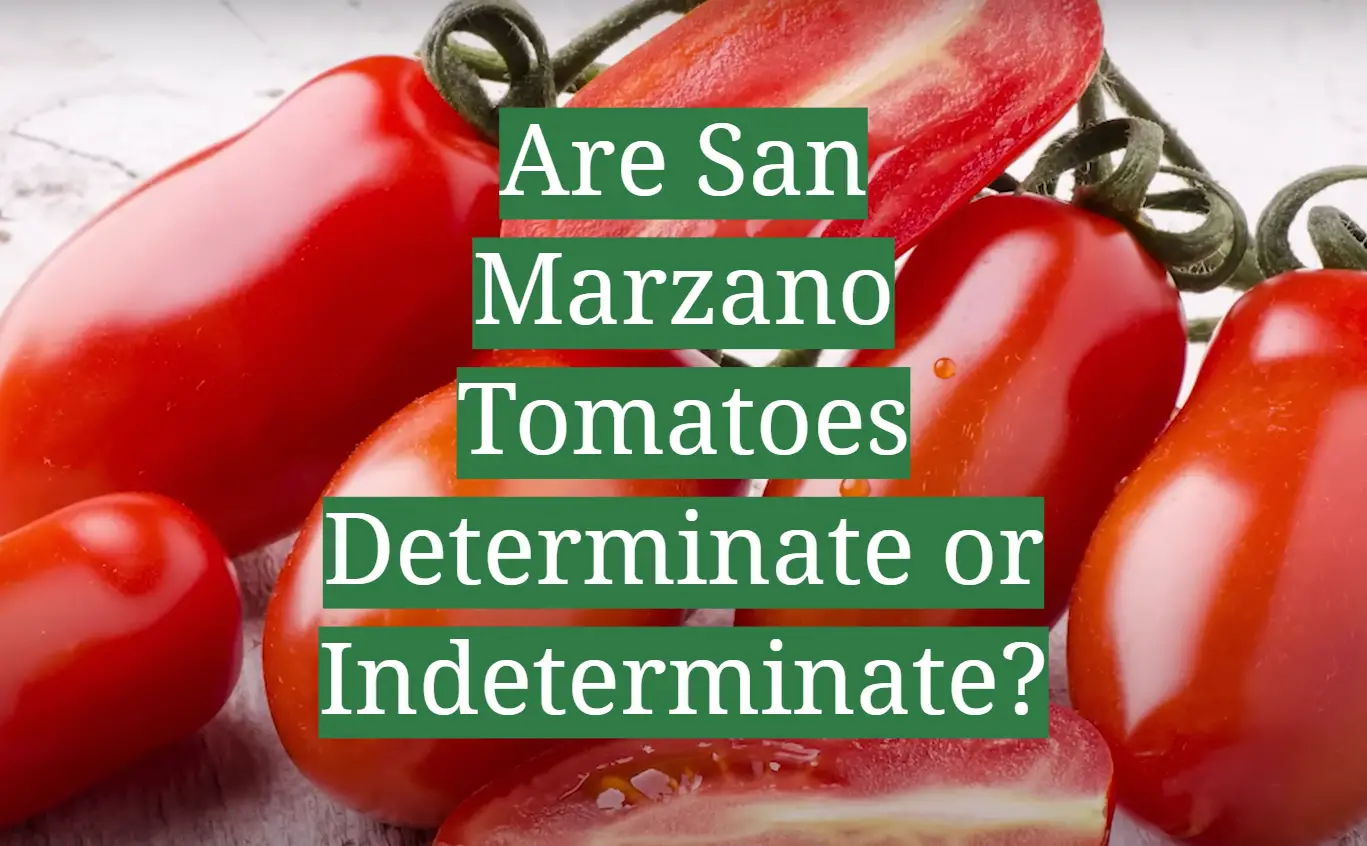




Leave a Reply
View Comments